10 Romanesque Art Treasures from Barcelona
Barcelona = Gaudí, we all know that. For football fans, it is also the famous Barça, the team with the motto: “More than a club”. And so it is...
Joanna Kaszubowska 7 November 2024
The Devonshire Hunting Tapestries consist of four large tapestries depicting scenes of hunting various animals. They were made between 1430 and 1450 in Arras (modern-day France) for the courts of France and Burgundy. Tapestries of this quality surviving today are rare, most have been lost over time. What did the Devonshire Hunting Tapestries depict, and why would royal patrons be interested in brutal hunting scenes?
Here is everything you need to know about The Devonshire Hunting Tapestries.
The Victoria and Albert Museum acquired the tapestry set in 1957 from the house of The Dukes of Devonshire. The estate probably first belonged to the Countess of Shrewsbury (known as “Bess of Hardwick”). Bess built Hardwick Hall, part of the Derbyshire house, in the 1590s.
During the medieval and Renaissance periods, tapestries were valued more than traditional works of art. Although they took time to make, they were easy to transport, making them a popular form of art until the 17th century. Since medieval castles were made of stone, tapestries hung on the walls provided insulation, making them both functional and decorative pieces. As a plus, their narrative scenes were visual entertainment for owners and guests.
However, the hunt was among the most popular scenes depicted in tapestries. The theme of hunting was both a social event and a social need for food. But why were they so extravagant?
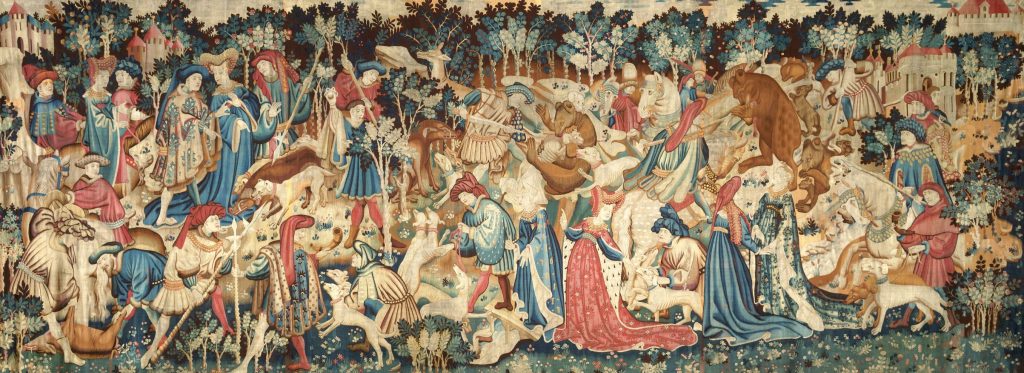
The Devonshire Hunting Tapestry: Boar and Bear Hunt, 1425-1430, probably made in Arras, France, Victoria and Albert Museum, London, UK.
At first glance, the tapestry is filled with so many people that it’s hard to make out the figures. However, it is not hard to see that the tapestry highlights several elegant couples. In the scene’s center, a man actively fights with a bear meanwhile other characters surrounding him fight to kill boars. Below, in the center, a lady stands wearing a blue gown decorated with letters that spell “much desire.” The man to the left wears sumptuous sleeves adorned with silver teardrops, which relate to the pursuit of love. Below the figures, the ground is decorated in a millefleur pattern resembling The Unicorn Tapestries.
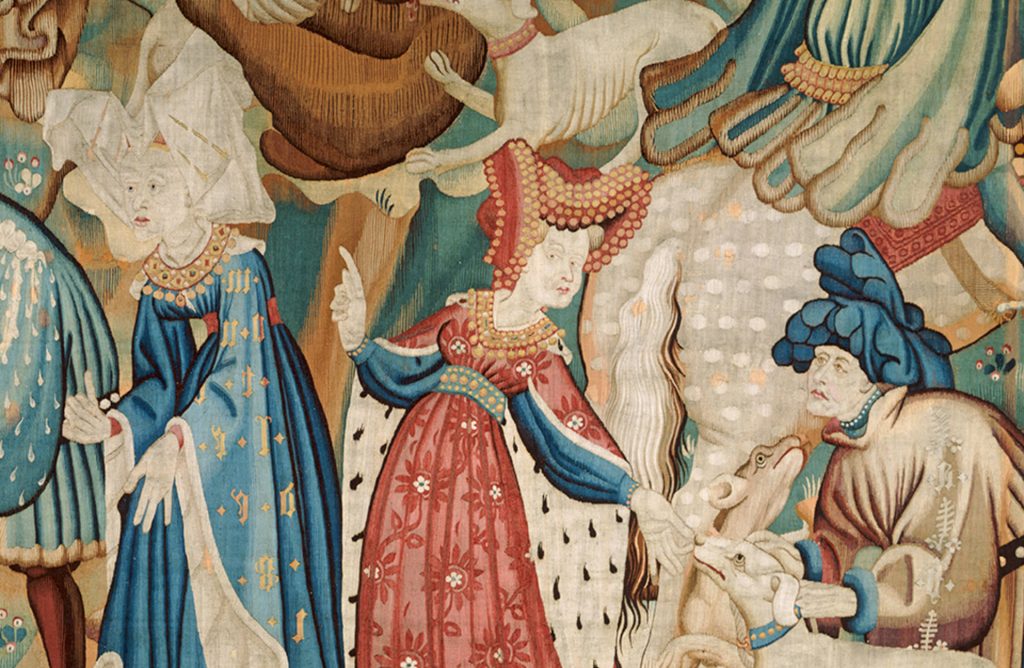
The Devonshire Hunting Tapestry: Boar and Bear Hunt, 1425-1430, probably made in Arras, France, Victoria and Albert Museum, London, UK. Detail.
The most interesting character in this tapestry is the woman shown above. Standing in her graceful pose, she wears a deliciously rich red gown. The gown is lined with miniver, an expensive fur that comes from Baltic squirrels. Due to how large her dress is, it would require pelts of hundreds of squirrel skins to line! This representation references how important hunting was during the Middle Ages. Being a successful hunter paid well in a society of luxury.
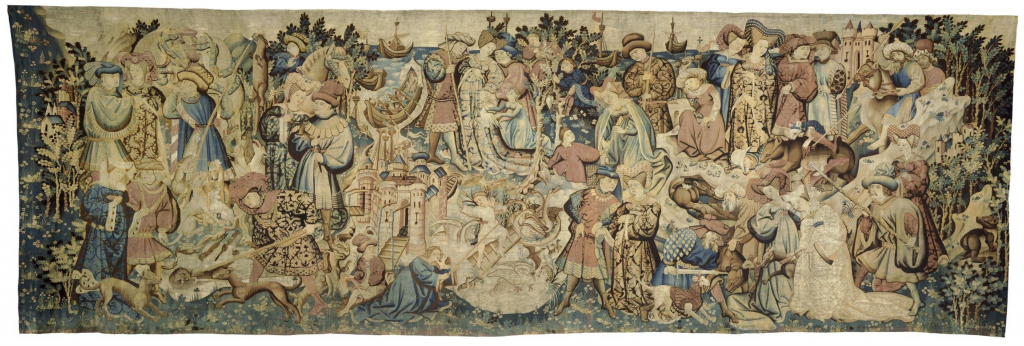
The Devonshire Hunting Tapestry: Otter and Swan Hunt, 1430-1440, probably made in Arras, France, Victoria and Albert Museum, London, UK.
Next up in the series is The Swan and Otter Hunt tapestry. Again, the length and size of this tapestry are similar to the previous one, along with the plethora of characters depicted in this hunting scene. On the left of the tapestry, we see the otter hunt taking place meanwhile in the center, the swans are being hunted. There is also a bear hunt featured in this tapestry, probably to tie in the theme of an extravagant hunt.
Otters and swans certainly sound like odd animals to hunt however, otters were not hunted for food but for their skins. Otters posed a threat to the population of fish, which also made them a target. In comparison, swan meat was highly desirable. Although initially swans were owned by the royal family, they later became wild animals. Yet, to hunt a swan, you had to obtain a license, making it a delicacy.
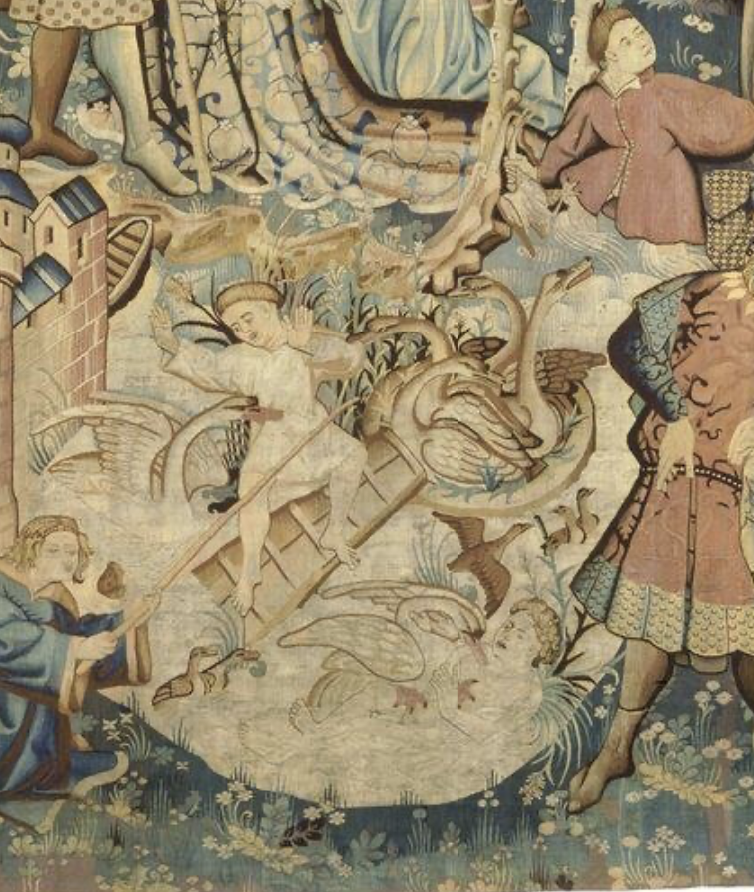
The Devonshire Hunting Tapestry: Otter and Swan Hunt, 1430-1440, probably made in Arras, France, Victoria and Albert Museum, London, UK. Detail.
No detail was overlooked in the weaving of this tapestry. Remarkably, the museum could date the tapestry based on the costumes of the figures. For instance, in this tapestry the laces of a boy’s shoes help identify the decade in which this tapestry would have been commissioned.
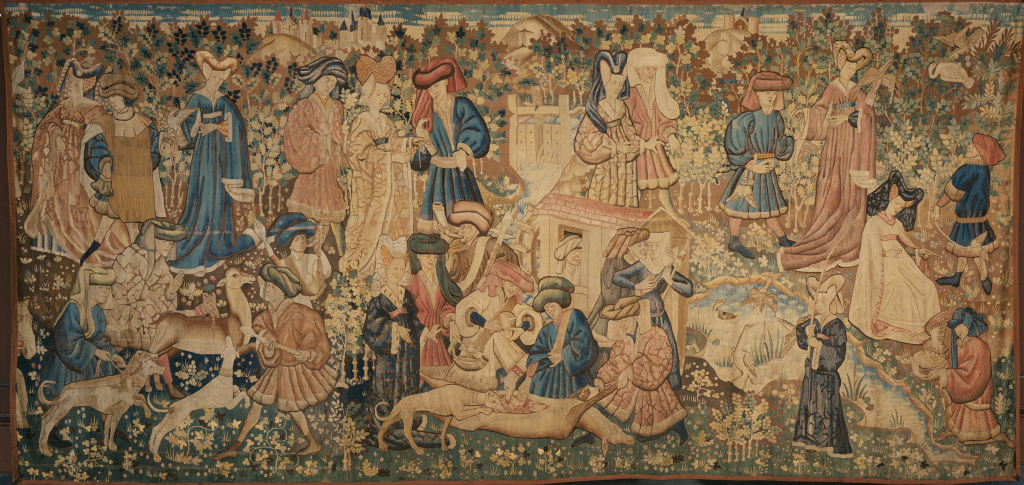
The Devonshire Hunting Tapestry: Deer Hunt, 1430-1440, probably made in Arras, France, Victoria and Albert Museum, London, UK.
Unfortunately, the Deer Hunt tapestry has the lowest design quality due to its needed repairs. However, it does provide an intriguing picture that the others do not- it’s a narrative featuring multiple scenes in one. It begins with the falconry on foot and ends with the ritual of skinning the deer for its meat. Since hunting different animals had separate rules, the deer hunt was typically reserved for the kings and their courts to participate in.
The fashion changes in the Deer Hunt compared to the previous two tapestries. The emergence of 1440s fashion is seen through men’s clothing, like squared shoulders and pointed shoes.
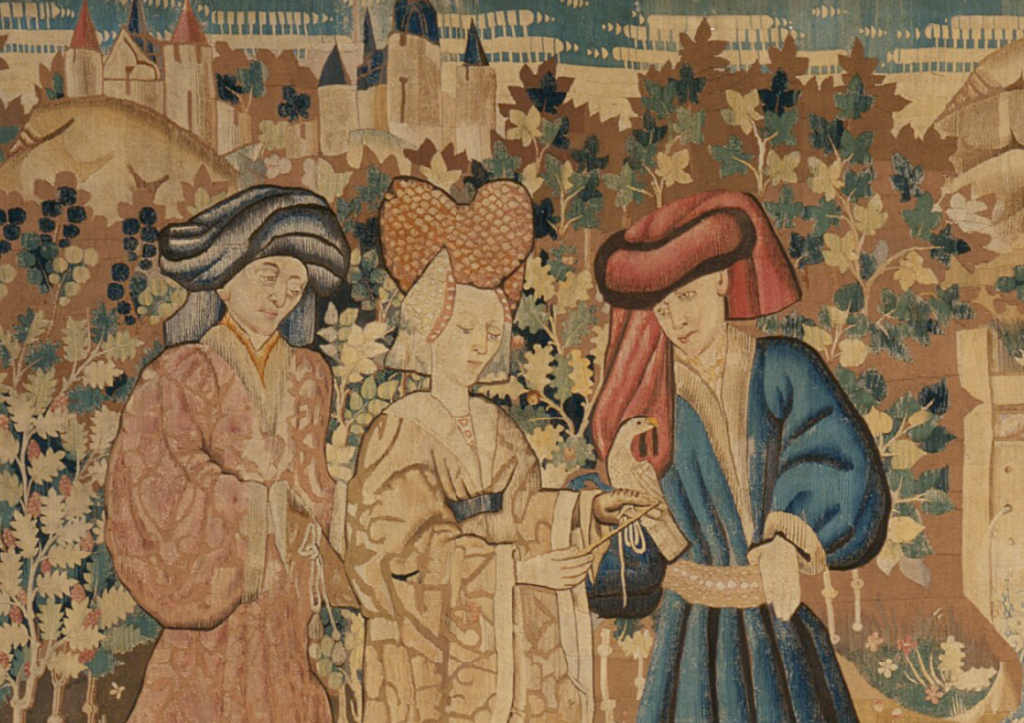
The Devonshire Hunting Tapestry: Deer Hunt, 1430-1440, probably made in Arras, France, Victoria and Albert Museum, London, UK. Detail.
The aristocracy was highly involved in the deer hunt since there were multiple roles involved. For instance, women liked to participate by using smaller falcons to hunt wild birds. It also allowed them to gossip and wear fine clothes while the men continued the hunt afterward. Knowing this, hunting during the Middle Ages became a social event in which both men and women could participate. This furthermore reflects the same purpose of a tapestry, showcasing both opulence and necessity.

The Devonshire Hunting Tapestry: Falconry, 1430-1440, probably made in Arras, France, Victoria and Albert Museum, London, UK.
Lastly is the Falconry tapestry, the tallest of the four in The Devonshire Tapestry series. This tapestry is the most detailed when it comes to foliage. Numerous woven examples of trees, flowers, and leaves cover the tapestry’s design. Unlike the other tapestries in the series, the Falconry tapestry is the only one that focuses on the hunt of one animal. The narrative is easiest to follow due to the particular grouping of figures and the links between them.
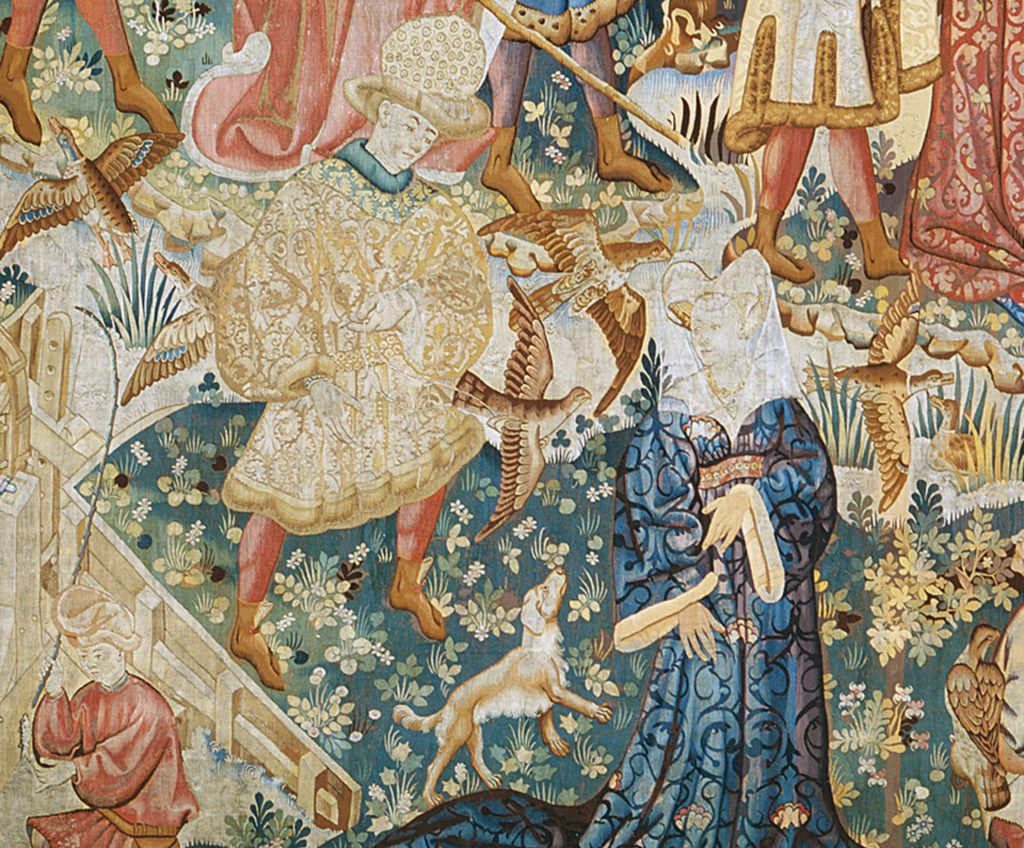
The Devonshire Hunting Tapestry: Falconry, 1430-1440, probably made in Arras, France, Victoria and Albert Museum, London, UK. Detail.
Overall, the Devonshire Hunting Tapestries provide a glimpse into court life and lives of aristocrats of the Middle Ages. Like tapestries, hunting among the upper classes provided an opportunity to showcase their wealth and power. Even Henry VIII was known to have over 200 tapestries depicting hunting scenes.
DailyArt Magazine needs your support. Every contribution, however big or small, is very valuable for our future. Thanks to it, we will be able to sustain and grow the Magazine. Thank you for your help!